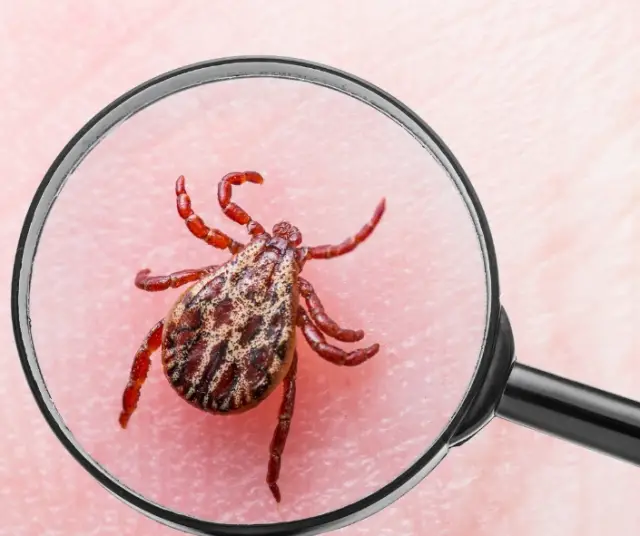Tick disease is a public health problem that has been increasing in various parts of the world. As people and animals interact with natural environments, the risk of exposure to ticks, which carry various diseases, increases.
Ticks are parasitic arachnids that feed on the blood of animals, including humans. As they gain a foothold in their host's skin, ticks can transmit bacteria, viruses, and other pathogens, leading to a variety of diseases. Tick disease is a general term that encompasses several conditions transmitted by these arachnids, with Lyme disease being one of the best known.
Tick Species and Geographic Distribution
Ticks, belonging to various species, play a crucial role in the transmission of diseases, with their geographical distribution being a determining factor in the prevalence of different pathologies. Among the most notable species are those of the Ixodes genus, known to be vectors of the dreaded Lyme disease. These ticks thrive in forested areas and their distribution spans regions of North America, Europe and Asia, where the incidence of Lyme disease has seen a significant increase in recent decades.
On the other hand, ticks of the genus Amblyomma are responsible for transmitting diseases such as Rocky Mountain spotted fever in North America and spotted fever in tropical regions. These species find their habitat in warmer areas and, consequently, their geographical distribution is focused on tropical and subtropical climates.
The variability in tick species is also reflected in their ability to adapt to different environments and climatic conditions. For example, ticks of the genus Dermacentor are known to inhabit grassland areas and can be found in both temperate and cold regions.
The geographical distribution of these species is not only determined by climatic factors, but also by the presence of potential hosts. Where there are mammals, birds or reptiles to feed on, ticks will find a habitat conducive to their reproduction and, therefore, the risk of disease transmission will increase.
Knowledge of the tick species present in a given region is essential to understand and manage the risks associated with the diseases they transmit. Furthermore, the expansion of urban areas into natural habitats and changes in climatic conditions may influence the distribution of these arachnids, highlighting the need for constant monitoring and adaptive prevention strategies.
Causes and Risk Factors
Tick disease has multiple causes and associated risk factors. Frequent exposure to wooded or densely vegetated areas increases the likelihood of coming into contact with ticks. Additionally, certain behaviors, such as walking barefoot in infested areas or having pets that frequent areas with ticks, can increase the risk of bites.
Symptoms of Tick Disease
Tick disease symptoms vary depending on the type of pathogen transmitted and the stage of infection. In the case of Lyme disease, initial symptoms may include fever, fatigue, muscle and joint pain, and characteristic skin rashes. However, the variety of tick-borne pathogens can lead to a wide range of clinical manifestations, from mild symptoms to more serious complications such as cardiac and neurological problems.
Diagnosis and treatment
Early diagnosis of tick disease is crucial for effective treatment. Health care professionals can use serological tests to detect antibodies to tick-borne pathogens. However, diagnosis can be challenging due to the diversity of symptoms and the possibility that not all patients will develop the characteristic skin rashes.
Conventional and Alternative Treatments
Treatment of tick disease often involves the use of antibiotics, especially in the early stages. However, some patients may experience persistent symptoms even after receiving treatment. This has led to the exploration of alternative approaches, such as hyperbaric oxygen therapy and herbal treatments. The effectiveness of these alternatives is being researched and debated in the medical community.
Precautionary measures
Prevention is key in the fight against tick disease. Various preventive measures are recommended, such as the use of insect repellents, protective clothing, and regularly checking skin and clothing after being outdoors. Additionally, controlling ticks on pets and promoting less favorable habitats for these arachnids are important strategies to reduce exposure.
Vaccine Research and Development
Continued research is essential to better understand tick biology and develop more effective strategies to prevent and treat the diseases they transmit. In recent years, progress has been made in the development of vaccines against Lyme disease and other tick-borne infections, offering a promising line of defense against these diseases.
Socioeconomic and Environmental Impact
Tick disease not only affects the health of people and animals, but also has a significant impact on society and the economy. The costs associated with medical treatment, loss of work productivity, and expenses related to tick control in affected areas contribute to a considerable economic burden.
Vaccine research and development, along with innovative treatment approaches, are crucial to meeting this evolving challenge and protecting the health of communities around the world.
